It really is a wonderful fungi season in central Victoria – both the Wombat Forest and drier forests to the north are filled with an ever changing array of spectacular forms. This bounty represents the fruiting bodies of these organisms – and they also provide food for the forest inhabitants.
Recent studies have examined the consumption of underground truffle like fungi by small marsupials such as potoroos, bettongs and mammals such as bush rats. But the large fungi popping up are munched upon by bigger mammals – the swamp wallabies!
This image, taken by Geoff Park, captures a wallaby in the act, holding a mushroom in his front paw, much like we would munch on an apple.
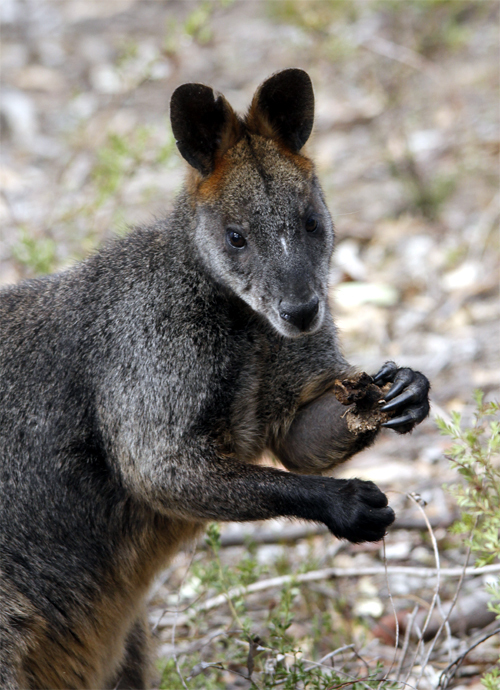
“Swamp wallabies consume macrofungi as part of a generalist browsing diet and, like other non-specialist mycophagists, are often overlooked as consumers and dispersers of truffle-like fungi. As dispersers of truffle-like fungal spores in forest interior and edge habitats, swamp wallabies undoubtedly contribute to maintenance of diverse truffle-like fungi communities and functioning forests, and influence vegetation dynamics at habitat boundaries. In landscapes from which other mycophagists have been extirpated, swamp wallabies may be key spore dispersers.” Reference: Danks, M.A. (2011). The swamp wallaby Wallabia bicolor: a generalist browser as a key mycophagist.
Despite these studies, very little is known about the consumption of large macrofungi by swamp wallabies. At the encouragement of Tom May, Senior Research Scientist (Mycology) Royal Botanic Gardens Victoria, Gayle Osborne (Wombat Forestcare) has set up motion capture cameras to document this behaviour.
It is a tricky business, as it also involves the correct identification of the fungi – which can be difficult if the wallaby has consumed most of the specimen. Gayle must identify the fungi first, via photos and spore prints, often with the help of fungi literate folks like Malmsbury naturalist John Walters. The camera is set up at an appropriate spot. And then wait – sometimes it is over a week before the fungi is eaten.
Although initially counter-intuitive, there is an advantage of being eaten by mammals such as swamp wallabies and possums. Like the smaller truffle species, large fungi are dispersed by spores, and these spores pass through the animal’s gut, to be spread widely, for benefit or other animals, and of course the health of the forest.
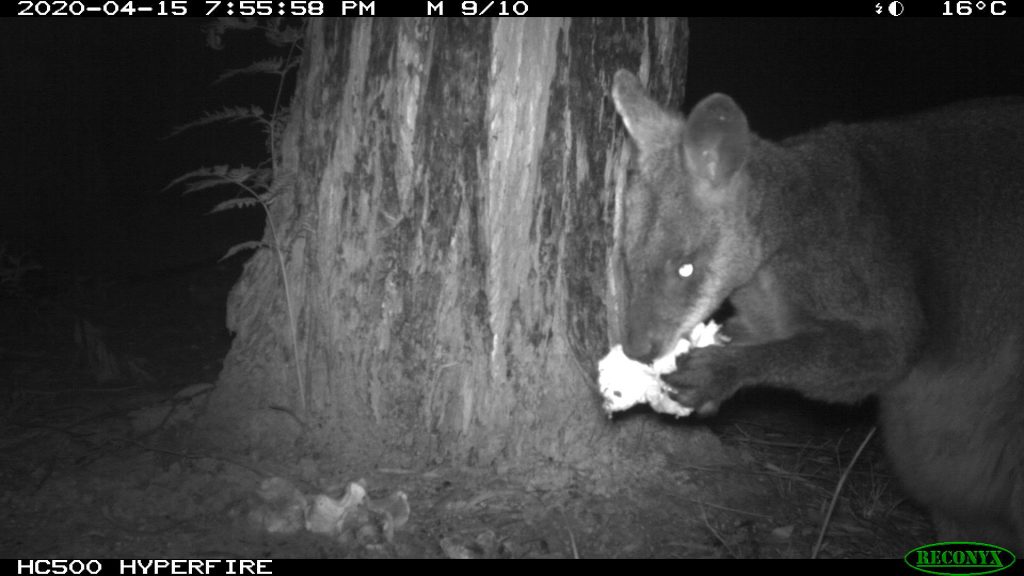
So how do they taste? And are some of them poisonous?
Gayle writes “Some of the fungi that were observed to be eaten taste very bitter for humans, especially Armillaria luteobubalina and Gymnopilus junonius. Other fungi belong to groups, which contain some toxic species, as is the case for Cortinarius, a few species of which are poisonous to humans as they contain the toxin orellanine, which can lead to kidney failure. Fungi that are unpalatable or toxic for humans may not have the same effects on animals.” ( June 2020 Wombat Forestcare Newsletter)
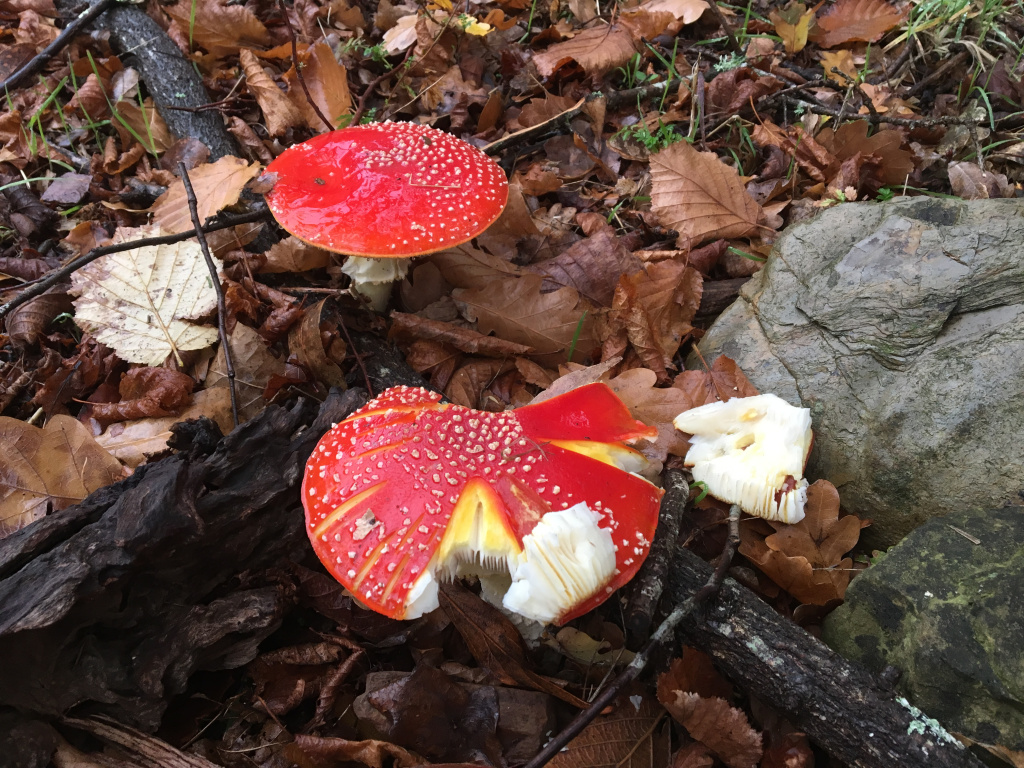
I am very curious as we have small numbers of the red and white fly agaric mushrooms (Amanita muscaria) which grow near our oak trees. And each year they are munched enthusiastically – the huge caps consumed entirely with only the stems remaining. These mushrooms can make humans feel quite very sick, and very strange – and I wonder if wallabies are affected in the same way? Or if they are impervious to these effects?
I have been unabe to find any research on this, or any accounts – so if anyone has seen their wallabies acting strangely this mushroom season – do get in touch via my blog! Unlike Gayle, I do not have a night camera – so the mushrooms could be being consumed by our local Bobucks or Mountain Brushtail Possums. And if so – how does it affect them?
With thanks to Gayle Osborne, Wombat Forestcare, and Geoff Park for his fantastic photo.
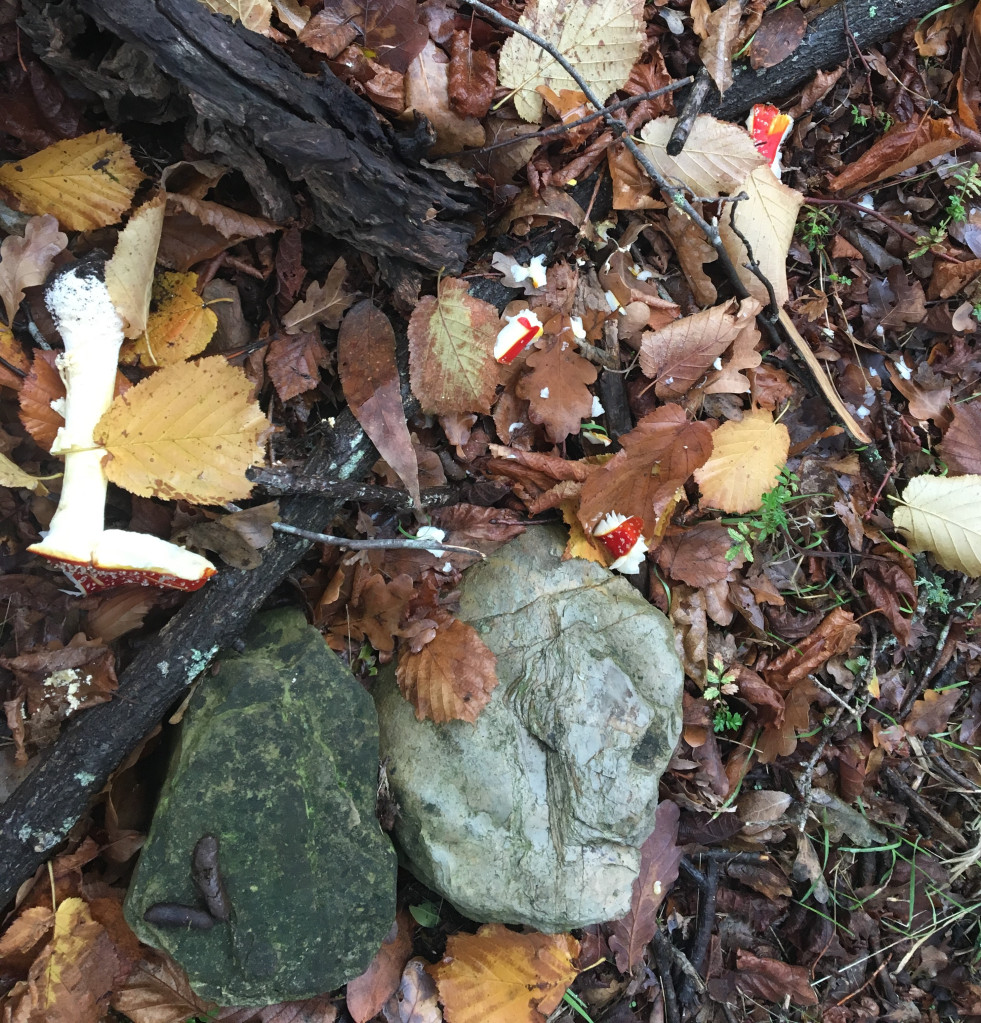
PS – an important note…Swamp wallabies and Greater Gliders and all the other Wombat Forest locals do NOT NEED a gold mine in their forest.
Some time ago I wrote about the Victorian Environmental Assessment Council’s (VEAC) for Wombat State Forest ( see here)
The state government was supposed to respond to these final recommendations to protect almost 60,000 hectares of central west forests in new national parks within 6 months.
The announcement should have been made by the end of February of this year – as it is nearly then end of June, this now constitutes a breach of legislation and statutory duty.
The forests worthy of protection as National Parks include the Wombat Forest (near Daylesford), Wellsford Forest (near Bendigo), Pyrenees Ranges Forest (near Avoca), and Mount Cole Forest (near Beaufort).
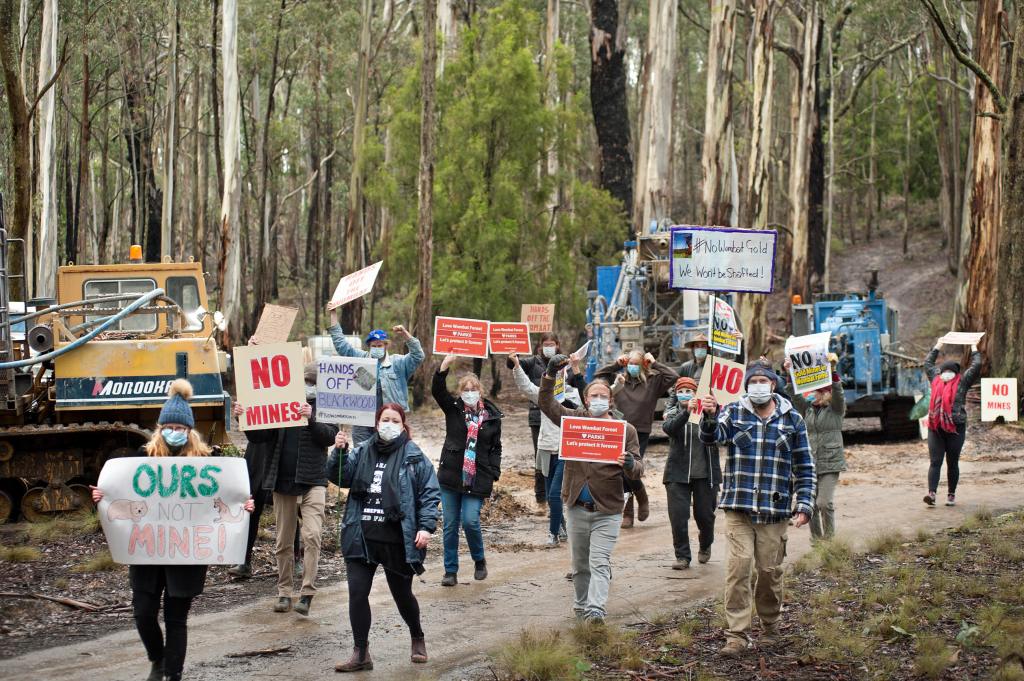
And now – Fosterville Mines in Bendigo has commenced exploratory drilling for gold in the VEAC proposed Wombat-Lerderderg National Park (very near Shaws Lake, in the Wombat State Forest).
Wombat Forestcare is asking concerned people to contact Mary-Anne Thomas and the minister to voice their concerns.
To send an email to the minister via an online form – see the VNPA website here
There is also a Change.org petition http://chng.it/bMXFc9gBFJ
Dear Tanya, I have been watching the black wallabies here searching for and eating mushrooms. I am pretty sure that are the pinkish ones we have in spades here that grow under the yellow gum. None of this is verified other than I can see that mushroom have been eaten. I have included a photo of our granddaughter with a couple of huge fungi here and the smallest All the best Kate Roberts
On Sat, 20 Jun 2020 3:21 pm Birds, bats, beetles and blossoms wrote:
> Tanya Loos posted: ” It really is a wonderful fungi season in central > Victoria â both the Wombat Forest and drier forests to the north are filled > with an ever changing array of spectacular forms. This bounty represents > the fruiting bodies of these organisms â and they also p” >
Hi kate! the photo didn’t come through I am afraid – I bet it was cute. Pinkish ones eh? so many varieties 🙂 bet your block looks great this year!
Thanks Tanya!Loved the fungi articles.Very interesting.Great pics too!!Cheers,Vanessa CravenSent from my Samsung Galaxy smartphone.
thanks for your kind comments Vanessa!
Never thought that wallabies eat mushrooms 🤯
They must have been very healthy 😅
Great story, great science 👍
As usual you educate us about our environment in an interesting, entertaining way…when is the first book and the first children’s book?
Thanks Sue! that is so kind of you 🙂 Guess what – I already have a book! I think you would like it 🙂 https://tanyaloos.com/book-daylesford-nature-diary-6-seasons-in-the-foothill-forests/